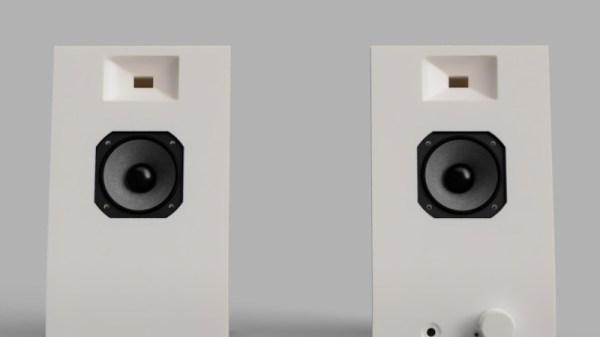We love the world of audiophiles here at Hackaday, mostly for the rich vein of outrageous claims over dubious audio products that it generates. We’ve made hay with audiophile silliness in the past, but what we really like above that is a high quality audio project done properly. It’s one thing to poke fun at directional oxygen free gold plated USB cables, but it’s another thing entirely to see a high quality audio project that’s backed up by sound design and theory to deliver the best possible listening. [Davide Ercolano]’s transmission line speakers are a good example, because he’s laid out in detail his design choices and methods in their creation.
Starting with the Thiele-Small parameters of his chosen driver, he simulated the enclosure using the Hornresp software. As a 3D-printed design he was able to give it paraboloid curves to the convoluted waveguide, making it a much closer approximation to an ideal waveguide than a more traditional rectangular design. In the base is a compartment for an amplifier module, with additional Bluetooth capability.
We’d be curious to know how well 3D printed plastic performs in this application when compared for example to something with more mass. However we like these speakers a lot; this is how a high quality audio project should be approached. We’ve delved into speakers more than once in the past, but if you’re looking for something really unusual then how about an electrostatic?











